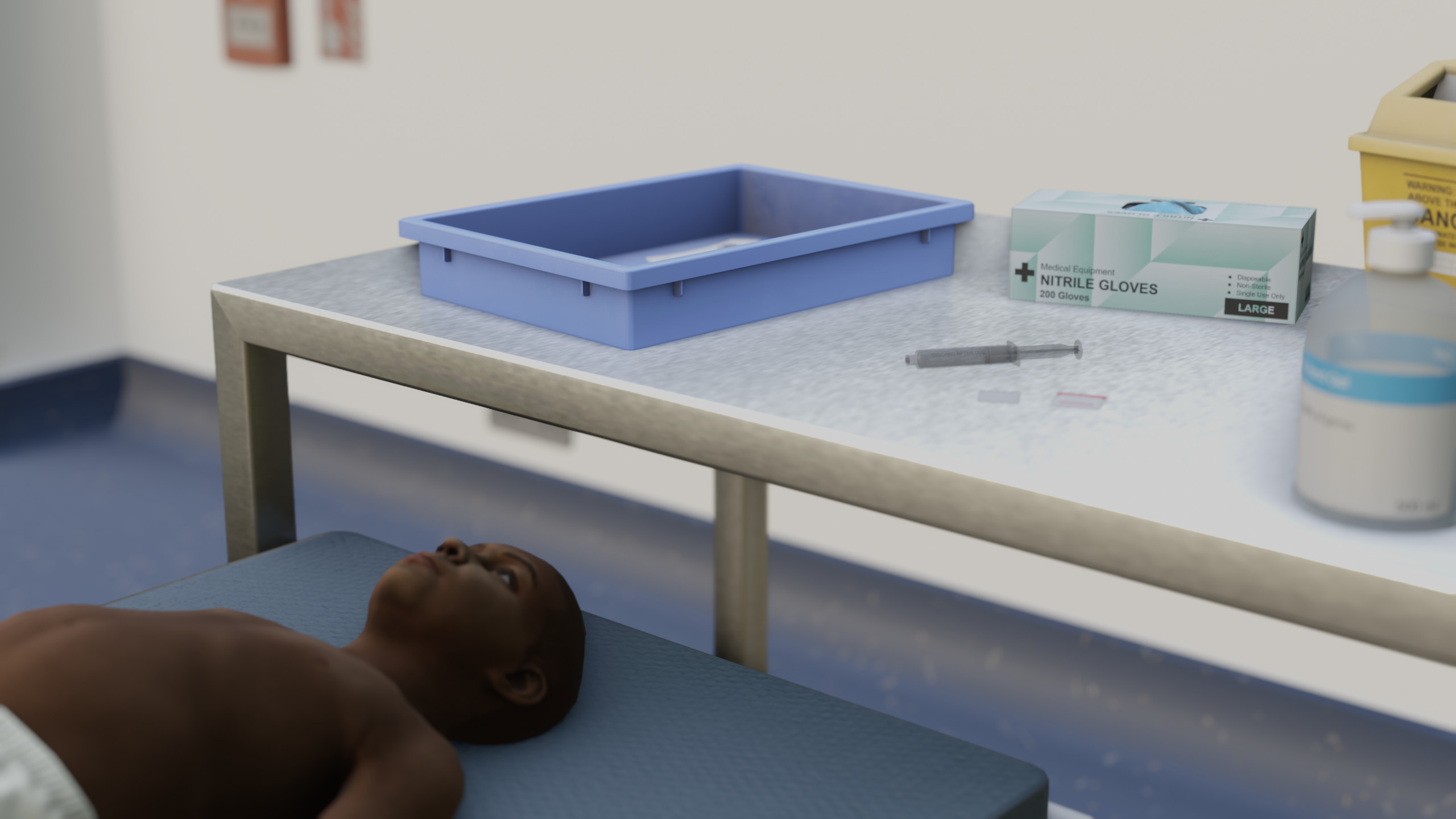
Paediatric Intraosseous Access Insertion - Tibia
Intraosseous AccessUse this resource in conjunction with your real-world training

Experience Summary
This experience will guide you through the steps of obtaining intraosseous (IO) access on a paediatric tibia.
Clinical Context
Intraosseous (IO) access is a critical technique used in paediatric emergency medicine when intravenous (IV) access cannot be rapidly established. In children, gaining reliable vascular access during resuscitation or acute deterioration can be especially difficult due to smaller veins, increased subcutaneous fat, and patient distress. IO access offers a rapid, effective, and safe alternative for delivering fluids, medications, and blood products in life-threatening situations.
IO access is most often considered in paediatric patients during:
- Cardiac arrest or peri-arrest situations.
- Severe shock or hypovolaemia.
- Major trauma.
- Status epilepticus.
- Sepsis with poor peripheral perfusion.
- Burns or injuries making venous access impractical.
Current paediatric advanced life support (PALS/APLS) guidelines recommend IO access if IV access cannot be achieved within 90 seconds or after two failed attempts. The IO route allows for rapid entry into the systemic circulation via the non-collapsible venous plexus of the bone marrow.
Common insertion sites in children include:
- Proximal tibia (most frequently used).
- Distal femur.
- Distal tibia.
- Proximal humerus (in older children).
- Sternum (rare in young children due to proximity to vital structures).
The procedure involves the use of a manual or battery-powered driver with a specialized IO needle. Correct placement is confirmed by the ability to aspirate marrow or blood and by the ease of flushing with minimal resistance.
Once established, the IO route allows for administration of all standard emergency medications, including adrenaline, fluids, and antibiotics. Drug absorption via the IO route is comparable to IV delivery in both speed and efficacy.
Potential complications include:
- Extravasation and compartment syndrome.
- Infection (osteomyelitis).
- Fracture or growth plate injury.
- Pain on infusion, which can be mitigated with lidocaine (in conscious patients).
Strict aseptic technique and correct site selection are essential to reduce risk. The IO line is considered a temporary measure and should be replaced by more secure vascular access (e.g. central or peripheral IV) within 24 hours when possible.
Learning Outcomes
- Understand how to appropriately perform obtaining IO access.
- Understand the critical safety steps in obtaining IO access.
- Understand the anatomical landmarks encountered during this procedure.
External Resources
